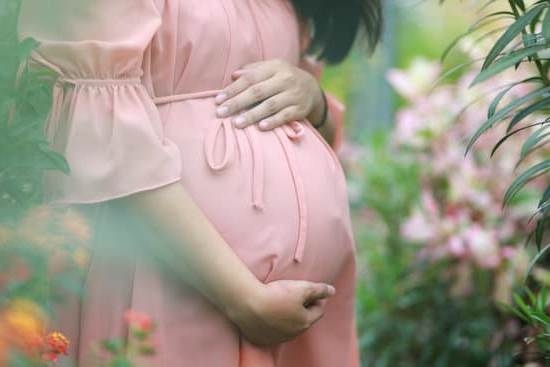Is nausea in pregnancy a sign of a girl? The experience of morning sickness is often associated with pregnancy, and it has been a topic of fascination for expectant parents and researchers alike. In this article, we will delve into the science behind nausea in pregnancy and explore the common myths surrounding this phenomenon.
We will also discuss gender prediction theories related to nausea in pregnancy, as well as the studies and research that have been conducted on this topic. Additionally, we will look into other signs and symptoms of pregnancy that are believed to be related to gender prediction, and provide practical tips for dealing with nausea during pregnancy.
Nausea in pregnancy, commonly known as morning sickness, is a well-documented occurrence that affects many expecting mothers. It’s often one of the first indicators of pregnancy for women, but it can also be a cause for concern due to its impact on daily life. Understanding the science behind nausea in pregnancy is essential in order to address any misconceptions about it and to provide effective support for pregnant individuals.
Throughout history, there have been various myths and beliefs surrounding nausea in pregnancy. Some theories suggest that experiencing severe morning sickness may be an indication of carrying a baby girl.
However, these theories are not always based on scientific evidence and can lead to misconceptions about gender prediction during pregnancy. In the following sections, we will explore these common myths and separate fact from fiction when it comes to nausea in pregnancy as a potential sign of carrying a girl or boy.
The Science Behind Nausea in Pregnancy
Nausea and vomiting are common symptoms experienced by many pregnant women, with a prevalence of about 70-80%. The exact cause of this discomfort is not fully understood, but there are several theories that attempt to explain why it occurs. One prevailing theory suggests that nausea in pregnancy is related to the rapidly increasing levels of human chorionic gonadotropin (hCG) hormone, which is produced by the placenta.
There are also other factors that may contribute to nausea in pregnancy, such as heightened sense of smell and sensitivity to certain odors, changes in hormones like estrogen and progesterone, as well as psychological and emotional factors. Additionally, some experts believe that genetics and a woman’s individual sensitivity may also play a role in experiencing nausea during pregnancy.
- Increased levels of hCG hormone
- Changes in estrogen and progesterone
- Sensitivity to smells and odors
In some cases, the severity of nausea and vomiting during pregnancy can be so severe that it requires medical intervention. This condition is known as hyperemesis gravidarum and may lead to dehydration, weight loss, and inadequate nutrition for both the mother and the developing fetus. It is essential for pregnant women experiencing severe symptoms to seek medical attention to ensure their well-being.
Overall, while the exact science behind nausea in pregnancy remains inconclusive, it is safe to say that this symptom is a common experience for many expectant mothers, regardless of the baby’s gender. While some gender prediction theories suggest a link between nausea and carrying a baby girl, there is no scientific evidence to support these claims.
It is important for pregnant women to focus on managing their symptoms with the guidance of healthcare professionals rather than relying on unproven gender prediction methods.
Common Myths About Nausea in Pregnancy
When it comes to pregnancy, there are many myths and old wives’ tales that circulate about various symptoms and signs. One of the most common myths is that experiencing nausea during pregnancy is a sign that the baby may be a girl. This belief has been around for centuries and has been passed down through generations, but is there any truth to it?
Old Wives’ Tales and Gender Prediction
Throughout history, women have relied on old wives’ tales and folklore to predict the gender of their unborn child. Some of these beliefs include the shape of the mother’s belly, her cravings, and even the position of the baby. Nausea in pregnancy is another widely held belief as a potential indicator of the baby’s gender, with many believing that severe or prolonged morning sickness indicates a higher likelihood of carrying a female fetus.
The Science Behind Nausea in Pregnancy
While there may not be concrete evidence to support the notion that nausea in pregnancy is a sign of carrying a girl, there are scientific explanations for why it occurs. Hormonal changes, particularly an increase in human chorionic gonadotropin (hCG) levels, can trigger nausea and vomiting during pregnancy.
Additionally, other factors such as stress, fatigue, and certain smells can contribute to feelings of queasiness. Therefore, it is important to recognize that experiencing nausea during pregnancy is not exclusive to carrying a female fetus.
Managing Expectations
It’s essential for expecting mothers to manage their expectations when it comes to using nausea as a gender predictor. While it may be entertaining to speculate about the baby’s gender based on symptoms like morning sickness, it’s crucial to remember that every pregnancy is unique and individual experiences can vary greatly.
It’s always best to rely on medical methods such as ultrasounds or genetic testing for accurate gender prediction rather than relying on myths or old wives’ tales.
Gender Prediction Theories and Nausea in Pregnancy
Many people believe that experiencing more severe nausea during pregnancy could be a sign of carrying a girl. This idea has been passed down through generations and has become a popular gender prediction theory. However, it is important to note that there is no scientific evidence to support this claim. Nausea in pregnancy, also known as morning sickness, is a common symptom experienced by many pregnant individuals regardless of the baby’s gender.
According to obstetricians and gynecologists, there is no definitive link between the severity of nausea and the gender of the baby. While some women may indeed have more intense morning sickness when carrying a girl, others may experience the same symptoms with a boy. It is essential to approach gender prediction theories with caution and not rely on these ideas as absolute truths.
Research studies have shown mixed results when examining the association between nausea in pregnancy and the baby’s gender. Some studies suggest a potential correlation, while others find no significant link between the two.
As a result, it is crucial for expectant parents to understand that nausea in pregnancy should not be used as a reliable indicator of the baby’s sex. Consulting with healthcare professionals and undergoing medical tests are more accurate methods for determining the gender of the baby.
| Study | Findings |
|---|---|
| Study 1 | Suggests a potential correlation between nausea in pregnancy and baby’s gender |
| Study 2 | Finds no significant link between nausea in pregnancy and baby’s gender |
Studies and Research on Nausea in Pregnancy and Gender
When it comes to pregnancy, many myths and old wives’ tales circulate about what different symptoms might indicate about the baby’s gender. One common belief is that experiencing more severe nausea during pregnancy could mean that you are carrying a girl. While this idea has been around for a long time, it is important to consider the scientific evidence behind it.
Studies and research on the connection between nausea in pregnancy and the baby’s gender have been conducted over the years, but the results have been inconclusive. Some studies have suggested a link between having a girl and experiencing more intense or prolonged nausea, while others have found no significant correlation. It is essential to note that every pregnancy is unique, and various factors can contribute to the severity of nausea experienced by expectant mothers.
Despite inconclusive evidence regarding the relationship between nausea in pregnancy and the baby’s gender, some women still find it interesting to explore these theories as part of their pregnancy experience. However, it is crucial to remember that other reliable methods for determining the baby’s gender exist, such as ultrasound scans or genetic testing. Ultimately, the most important thing is ensuring a healthy pregnancy for both mother and baby, regardless of any popular speculations about gender prediction.
- Benefits of understanding studies on nausea in pregnancy and gender
- Helps separate fact from fiction
- Allows for informed decision-making
- Promotes understanding of individual experiences
- Risks of relying solely on myths and old wives’ tales
- Potential for disappointment or misinformation
- Overlooking other significant aspects of prenatal care
- Contributing to unnecessary stress or anxiety
Other Signs and Symptoms of Pregnancy and Gender Prediction
When it comes to predicting the gender of a baby, many old wives’ tales and myths abound. While nausea in pregnancy may be considered a sign of carrying a girl, there are other signs and symptoms that people believe can indicate the gender of the baby. These include cravings, heart rate, skin condition, and even the shape of the baby bump. It’s important to remember that these are just fun myths and should not be taken as scientific evidence.
Cravings
One common belief is that the type of food a pregnant woman craves can indicate the gender of her baby. For example, craving sweet foods is said to signify a girl, while craving salty or savory foods indicates a boy. While some women may experience specific cravings during pregnancy, there is no scientific evidence to support this as a reliable method for predicting the gender of the baby.
Heart Rate
Another popular theory is that the baby’s heart rate can predict its gender. It is often said that if the baby’s heart rate is above 140 beats per minute, it’s a girl, and if it’s below 140 beats per minute, it’s a boy. However, research has shown that there is no significant correlation between fetal heart rate and gender.
Skin Condition
Some people believe that changes in a woman’s skin during pregnancy can indicate the baby’s gender. For example, it is thought that acne during pregnancy means you’re having a girl because she “steals” her mother’s beauty. However, these claims are purely speculative and have no scientific basis.
Practical Tips for Dealing With Nausea in Pregnancy
Nausea and vomiting are common symptoms of pregnancy, especially during the first trimester. Many women experience these symptoms, and it can be challenging to manage them. However, there are practical tips that can help alleviate nausea in pregnancy, regardless of whether you are carrying a boy or a girl.
One effective tip is to eat small, frequent meals throughout the day. Keeping the stomach from becoming completely empty can help reduce feelings of nausea. It is also important to stay hydrated by drinking plenty of fluids, such as water or ginger tea. Some women find relief from nausea by snacking on light, bland foods like crackers or pretzels.
Another practical tip for managing nausea in pregnancy is to avoid strong odors that can trigger feelings of queasiness. This may include avoiding certain foods with pungent smells or staying away from places with strong scents, such as perfume counters or kitchens with cooking aromas. Getting plenty of rest and finding ways to manage stress can also help in reducing nausea during pregnancy.
Final Verdict
In conclusion, the question of whether nausea in pregnancy is a sign of carrying a girl remains inconclusive. While some studies and research suggest a possible link between severe nausea and carrying a female fetus, there is no definitive scientific proof to support this theory. It is important for expectant mothers to remember that each pregnancy is unique and individual experiences may vary.
It is essential to debunk common myths and misconceptions surrounding nausea in pregnancy and gender prediction. While some old wives’ tales may claim that experiencing intense nausea means you are having a girl, it is crucial to rely on medical advice and evidence-based knowledge when it comes to determining the gender of your baby.
Ultimately, all expectant mothers should focus on taking care of their overall health and well-being during pregnancy, regardless of the potential gender of their child. Nausea in pregnancy can be challenging, but with the right support and guidance from healthcare professionals, women can effectively manage this symptom and enjoy a healthy pregnancy journey. Whether you are expecting a boy or a girl, the most important thing is to ensure a safe and smooth delivery for both mother and baby.
Frequently Asked Questions
What Are the First Signs of a Pregnant Girl?
The first signs of a pregnant girl typically include missed periods, morning sickness, breast tenderness, and frequent urination. These symptoms are often the first indicators that a girl may be pregnant.
What Are Early Signs of Having a Boy?
Early signs of having a boy may include a lower fetal heart rate, carrying the baby lower in the abdomen, and increased appetite. Some people also believe that severe morning sickness is a sign of carrying a boy.
How Do You Know It Is a Boy or Girl?
The most definitive way to know if it’s a boy or girl is through ultrasound or genetic testing. However, many people rely on old wives’ tales and myths such as the position of the baby bump, cravings for sweet or salty foods, and even the shape of the mother’s face to predict the gender.
Ultimately, these methods are not scientifically proven and should be taken with caution.

Welcome to my fertility blog. This is a space where I will be sharing my experiences as I navigate through the world of fertility treatments, as well as provide information and resources about fertility and pregnancy.





